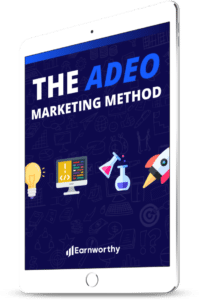
Meetings. We either love them or hate them. Especially in the marketing industry, meetings can bring us great joy as we let our creativity run wild, or they drain the energy out of us as we sit through an eternity of boring PowerPoint slides.
But like it or not, meetings have an important place in every professional organization. So, let’s learn how to optimize our productivity in meetings and have some fun along the way.
In this article, I want to outline a methodology I created almost haphazardly one day at the office. We were discussing our client interaction process and we started talking about all the different ways we communicate with clients.
One very important communication method is our weekly, biweekly, or monthly client meeting. I knew there had to be a better approach to how we handled meetings, so I started developing an agenda of everything we ideally should accomplish in a marketing meeting with a client.
Then, I prioritized, subtracted, added, removed, defined, and rearranged those items until I had something that made quite a bit of sense. Oh, and it looked good on paper too, because my new meeting agenda spelled out the acronym PAARTI.
Yes, that’s right. I found a way to turn a boring marketing meeting into a party–ahem, I mean PAARTI.
So, what does PAARTI stand for, and how can you apply this framework to your next marketing meeting? Let’s dive right in!
[Tweet “How to make your #marketing meetings fun again. Turn every meeting into a PAARTI!”]
P – Priorities
The most important part of any meeting is the start. That’s where you set the tone for the rest of your time together. That’s why it’s important to kick things off by defining the priorities of the meeting early on.
What is the agenda? What do you plan on accomplishing? Who are the key players in the room? How much time do we have? These are the types of questions that should be answered during this initial phase of the meeting. All of this is meant to clarify just why we’re having the meeting and what the priorities are.
As the saying goes, “if you fail to plan, you plan to fail.” Meetings need to have a plan and that plan starts with the priorities.
A – Approvals
Within marketing agencies or departments, getting approvals from clients or managers on specific projects is often like pulling teeth. Sometimes it takes forever, but you know it has to be done. The approval process for a specific task or deliverable can also quickly become a bottleneck for an entire marketing campaign if not addressed quickly.
So, get your approvals out of the way early on in your marketing meetings. The logic is that if the meeting must be cut short for some reason, as least you’ll be able to get some stuff moving forward right away.
A – Actions
Next up with have good old actions. This is where you outline the items that need further action or discussion.
Examples of actions on a marketing meeting agenda are SEO projects that you recommend, or tasks that the client needs to complete that are out of your immediate control.
Or they might consist of generalized recommendations that are worth further discussion between the client, the marketing team and other participants in the meeting.
Essentially, the actions portion of the meeting is where a lot of the actual work gets done in the meeting. It’s not about reporting or approving things. It’s about making stuff happen or at least getting the ball rolling right there on the spot.
R – Reporting
Ah, reports. We sure dislike compiling them, don’t we? But without reporting, we’d never know just how well a marketing campaign is performing. So naturally, reports are going to be an important component of marketing meetings whether we like it or not.
For marketing agencies, usually they’re reputation is only as good as their last report. It all comes down to the numbers. Clients want to see the return on investment. Moreover, reporting allows agencies to see what’s working and what needs to get adjusted.
How reports are presented in meetings is just as important as the data itself. The reporting portion of a meeting should be concise and actionable.
If a bunch of data is going to be covered, be sure to offer key takeaways and summaries that everyone can understand. Also, it helps if you start with higher-level data and then gradually drill down into the specifics. And ensure that the information can be used immediately to improve future performance.
T – Timeline
Next up, we want to look at the timeline. What does this mean? Well, it’s going to be different for every organization, client, or project, but this is pretty much the to-do list of your meeting.
More specifically, think of the timeline as the to-do list combined with responsible parties and deadlines. This is your roadmap for everything moving forward.
If you have six different marketing projects moving forward, you should break down those projects to individual tasks, give them deadlines, and assign them to the right people. All of this information should then be outlined on a timeline to be reviewed in the meeting.
This way, if a client wants to know what you’ll be working on next week, they can easily see it. Of course, if things change, the timeline changes too. It’s just one way to keep everyone on track and to organize who is doing what and when it will be done.
I – Ideas
We’re almost finished! This is the last part of the PAARTI agenda and it stands for ideas. It is my favorite portion of marketing meetings, because this is where pretty much anything goes. Do you have a great idea that you want to throw out there? Share it during this portion of the meeting.
This is basically your time to brainstorm. You can run the ideas portion of the meeting in a few different ways. You can go around the table (or screens if this is a virtual meeting) and ask for everyone to share one new idea. Or you can make it a little less formalized.
Whatever you do, make sure you let people know in advance that there will be a brainstorming portion of the meeting, so that they can start thinking.
You would be amazed at the ideas that can come out of this final stretch of a meeting. Also, since it is right at the end of the meeting, it’s a great way to end on a positive note. You won’t be crunching numbers and then ending. Instead, you’ll be tossing ideas out there and seeing what sticks. What a great way to end a meeting!
Time to PAARTI
There you have it; the six components of a great marketing meeting. Use some of these tips, or use them all. It’s up to you how you roll with it. But the bottom line is that meetings don’t have to be boring and ineffective. Use your meetings to think outside the box and actually get stuff done. Oh, and have a little fun along the way.
Who said we can’t have a marketing meeting that is also a PAARTI?
I hope you found some value in this methodology. I’m curious to know how you run your meetings. Share your best practices below or on Twitter!





